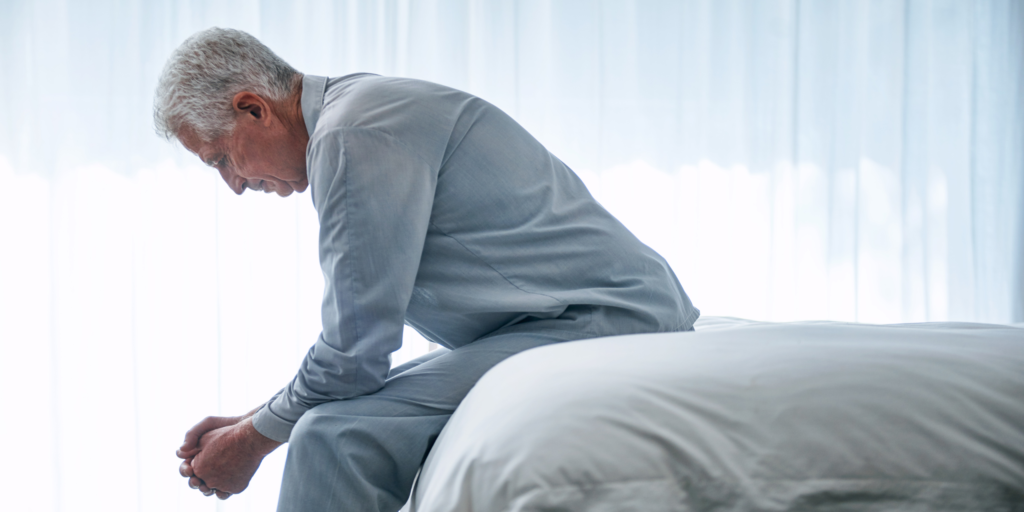The Difference Between Fall Blues & Seasonal Depression

Fall Blues or Seasonal Depression? Recognizing the Difference Is Key
As the long, sunny days of summer fade into crisp mornings and shorter evenings, many people notice shifts in their mood and energy. While fall brings cozy sweaters, colorful leaves, and holiday anticipation, it can also bring unexpected emotional challenges. For some, these changes are mild—what we often call the “fall blues.” But for others, the shift is more serious, signaling the onset of seasonal depression, also known as Seasonal Affective Disorder (SAD).
Recognizing the difference is key. Early awareness can make all the difference in getting the right support and learning strategies to maintain emotional well-being throughout the colder months.
Why Moods Change in Fall?
Seasonal mood shifts are often tied to changes in daylight exposure. As days get shorter, our bodies produce less serotonin (the “feel-good” neurotransmitter) and more melatonin (the sleep hormone). These changes can affect:
- Sleep cycles (feeling more tired or sluggish);
- Mood regulation (feeling down or irritable); and
- Energy levels (finding it harder to stay motivated).
For some, these adjustments are temporary and manageable. But for others, the chemical changes trigger a more significant mood disorder—Seasonal Affective Disorder—that requires professional care.
The Fall Blues: Mild, Temporary Shifts
The fall blues are common, short-lived, and usually mild. They often come and go as your body adjusts to the seasonal change. Symptoms include:
- Feeling a little sad or nostalgic as summer ends;
- Lower energy in the evenings;
- Craving comfort foods more often;
- Slight dips in motivation; and
- Missing outdoor time due to colder or darker days.
The fall blues are only mildly intense (not overwhelming), last just a few days or weeks, and are manageable through simple lifestyle adjustments like more daylight exposure or exercise. Think of the fall blues as a seasonal adjustment—your mind and body adapting to shorter days and colder nights.
Seasonal Depression: More Than Just the Blues
Seasonal Affective Disorder (SAD) is a form of depression that typically occurs during fall and winter. Unlike the fall blues, SAD has more severe and long-lasting symptoms that can interfere with daily life, including:
- Persistent sadness or hopelessness lasting weeks or months;
- Significant loss of interest in activities you normally enjoy;
- Low energy and fatigue that doesn’t improve with rest;
- Trouble concentrating or completing tasks;
- Changes in appetite, often with carb or sugar cravings;
- Weight gain or noticeable weight fluctuations;
- Oversleeping (hypersomnia) or disrupted sleep cycles;
- Withdrawal from friends, family, and social events;
- Feelings of worthlessness or excessive guilt; and
- In severe cases, thoughts of self-harm or suicide.
Seasonal Affective Disorder symptoms feel heavy, persistent, and difficult to manage alone. They can last for weeks or months, not just a few days, and interfere with work, school, or relationships. If you notice these symptoms, you should consider reaching out for professional help.
Practical Ways to Cope with Fall Blues
If you’re experiencing mild seasonal dips in mood, these small changes can often help restore balance and keep fall blues from escalating:
- Get Outside Daily - Aim for at least 20–30 minutes of natural daylight, even on cloudy days.
- Stay Physically Active - Exercise boosts serotonin and endorphins, improving mood and energy.
- Maintain a Sleep Routine - Stick to regular sleep and wake times to support your body’s natural rhythm.
- Eat Balanced Meals - Limit sugar and refined carbs and focus on nutrient-rich foods that stabilize mood.
- Stay Socially Connected - Plan regular time with friends or family, even if virtually, to avoid isolation.
When to Seek Professional Help
If your symptoms resemble seasonal depression—or if your mood significantly interferes with your daily life—it’s important to seek help. Fortunately, seasonal depression is proven treatable through a variety of options, including:
- Light therapy: Exposure to special lamps that mimic natural sunlight;
- Talk therapy (CBT): Helps reframe negative thought patterns and build coping skills;
- Medication: Antidepressants may help regulate brain chemistry in more severe cases; and
- Lifestyle adjustments: Structured daily routines, exercise, and social support.
If someone you care about is struggling with seasonal mood changes, your support and understanding can make a meaningful difference:
- Offer empathy without minimizing their feelings;
- Encourage healthy habits like walks, fresh air, and balanced meals;
- Invite them to social activities but understand if they decline; and
- Gently suggest professional help if symptoms seem severe or persistent.
TrustCare Mental Health & Wellness is Here to Help
Feeling a little down as the seasons change is normal—but when those feelings persist or become overwhelming, it may be a sign of seasonal depression. Recognizing the difference between the fall blues and SAD is the first step toward getting the right support.
You don’t have to go through it alone. TrustCare is here to help you or your loved ones find brighter days, even in the darker months. Our compassionate Mental Health team offers both in-person and telehealth services, including coping strategies, therapy, and personalized treatment plans. Wherever you are in your journey, we’re committed to supporting your well-being year-round. Schedule your appointment with our Mental Health Specialist here.
